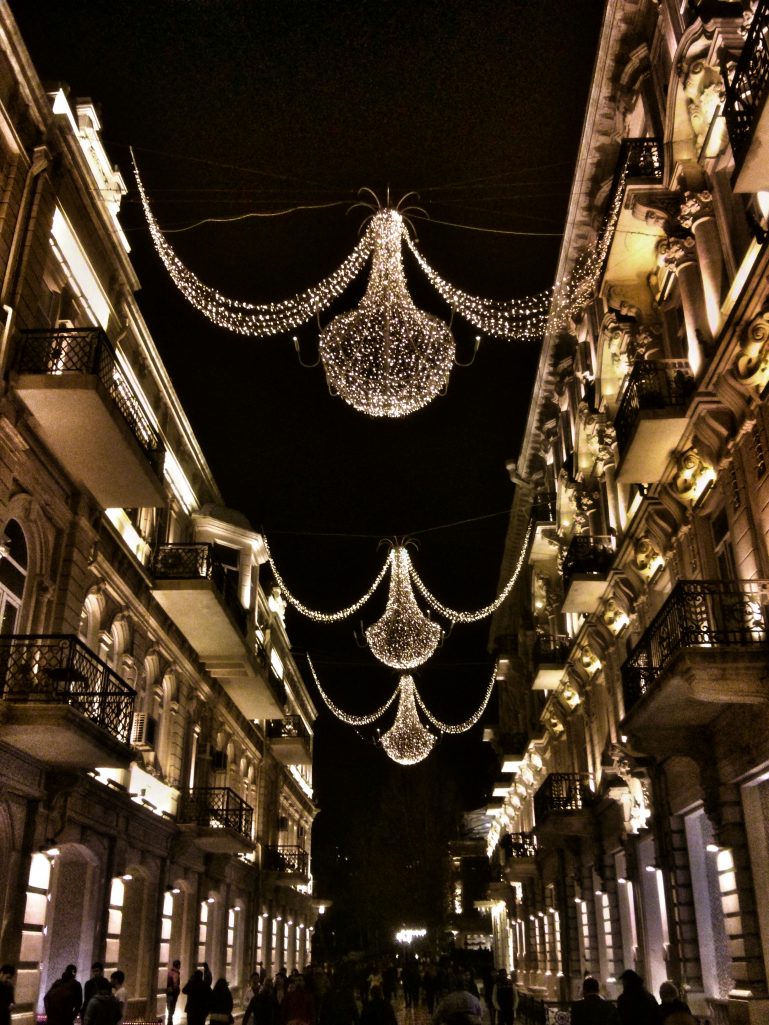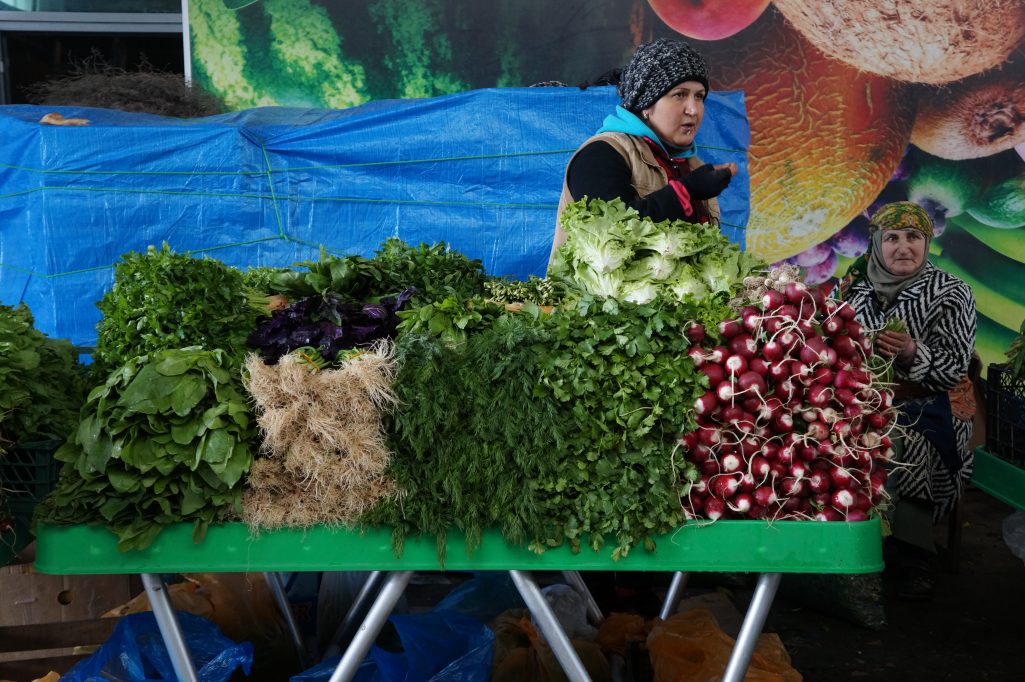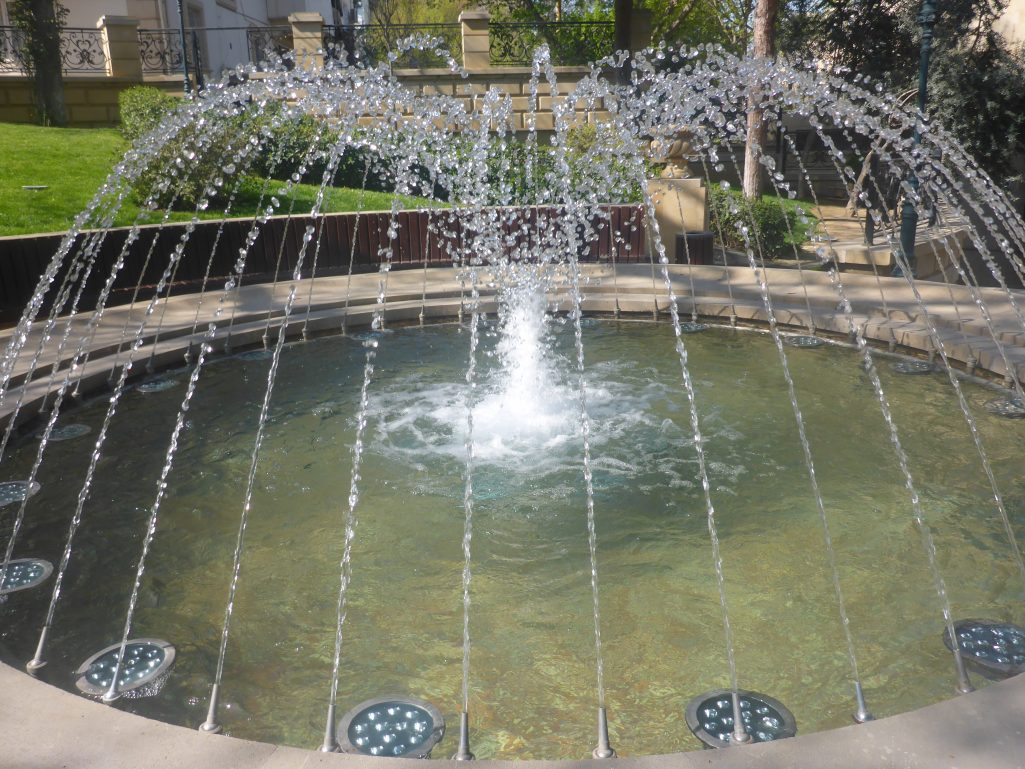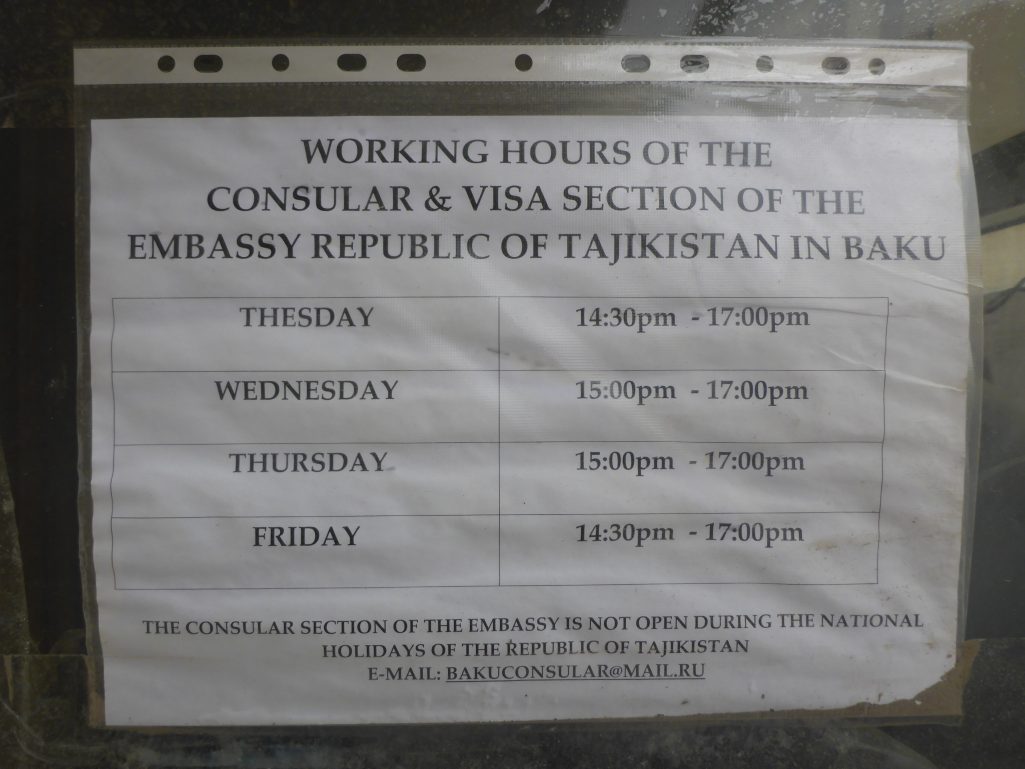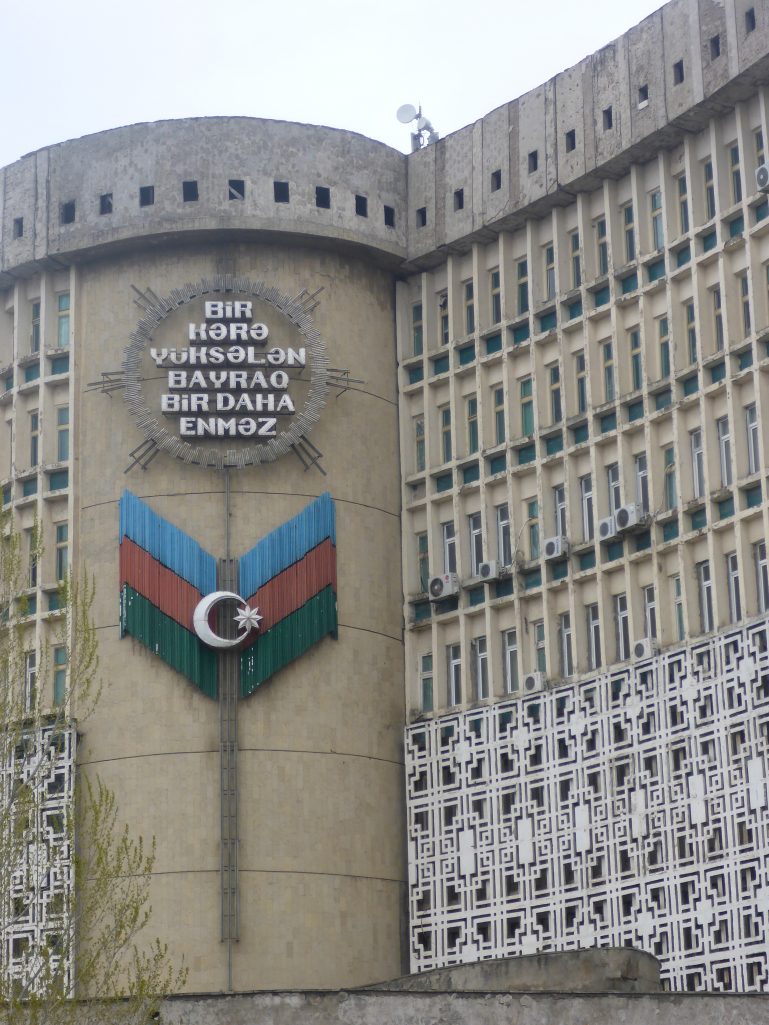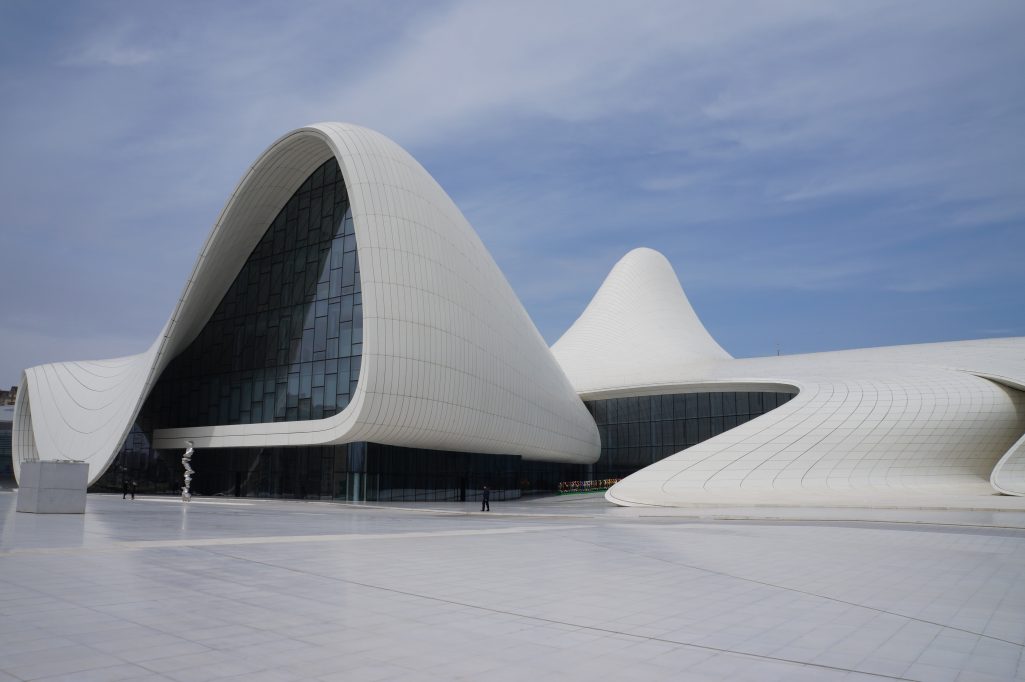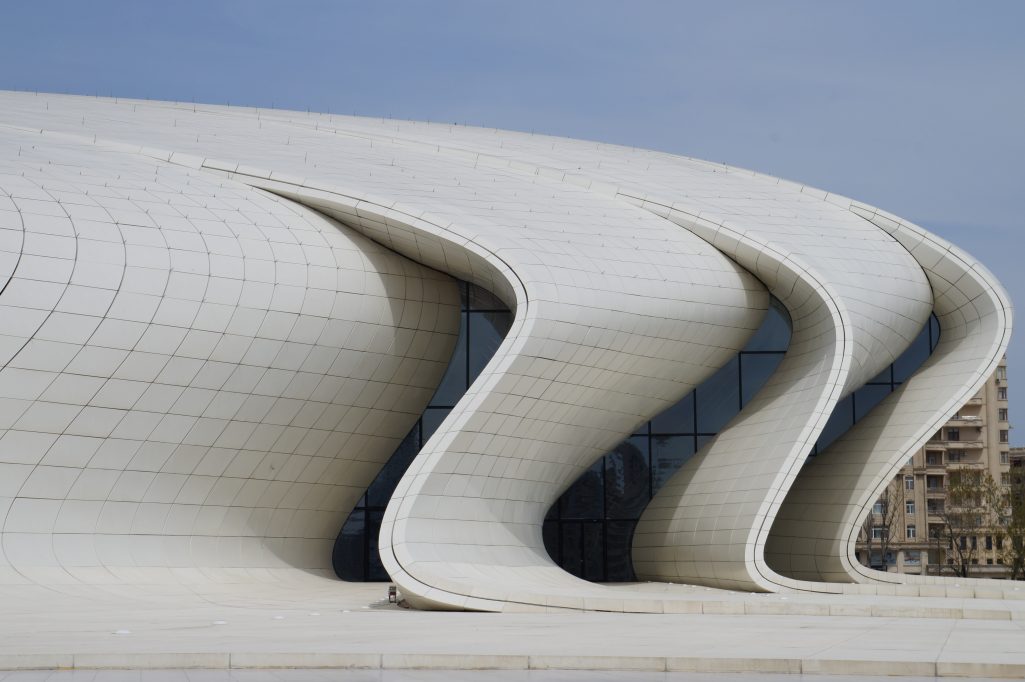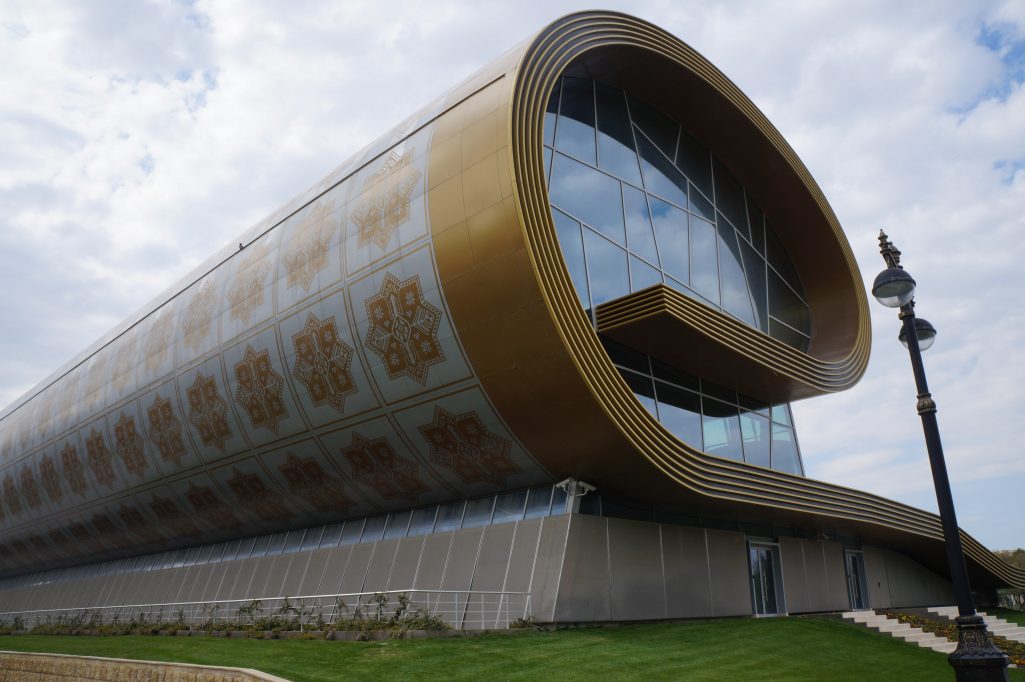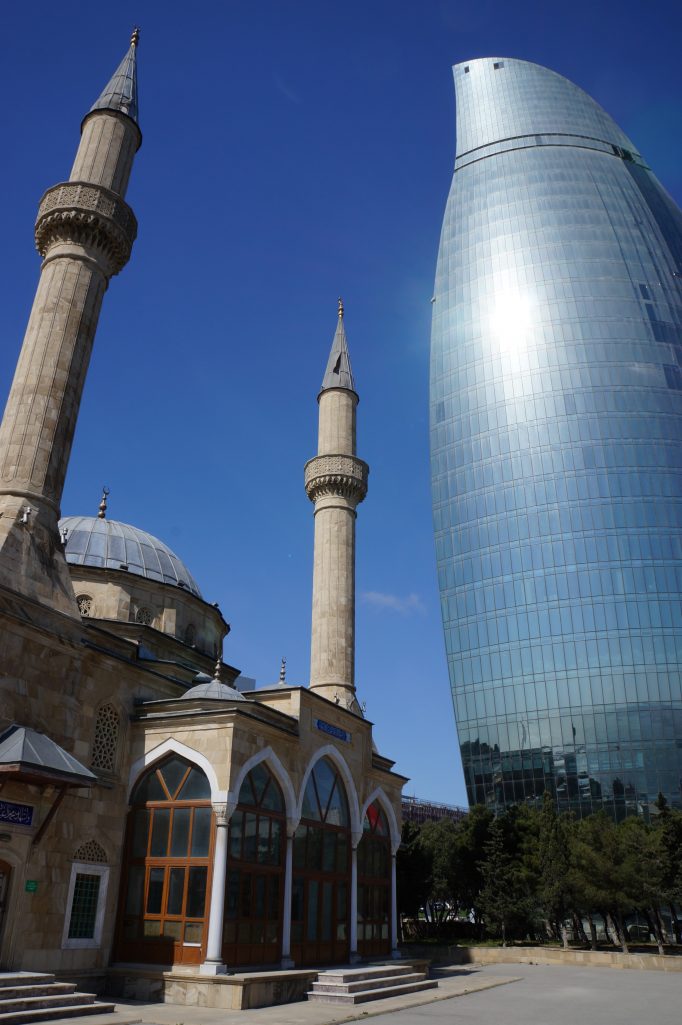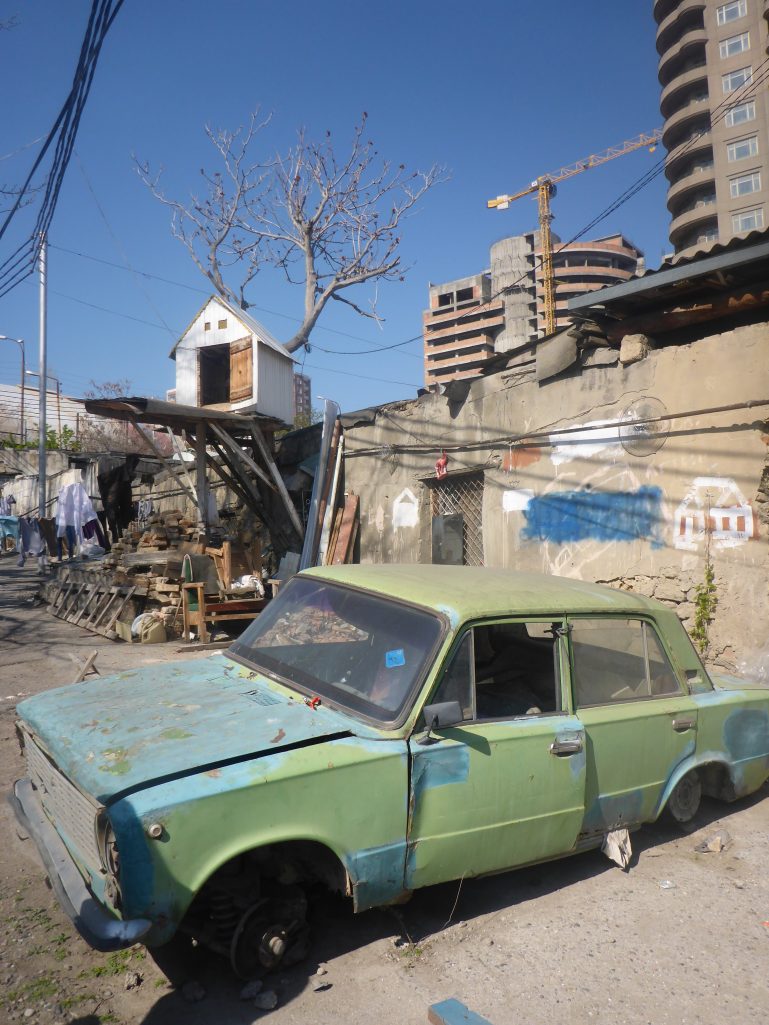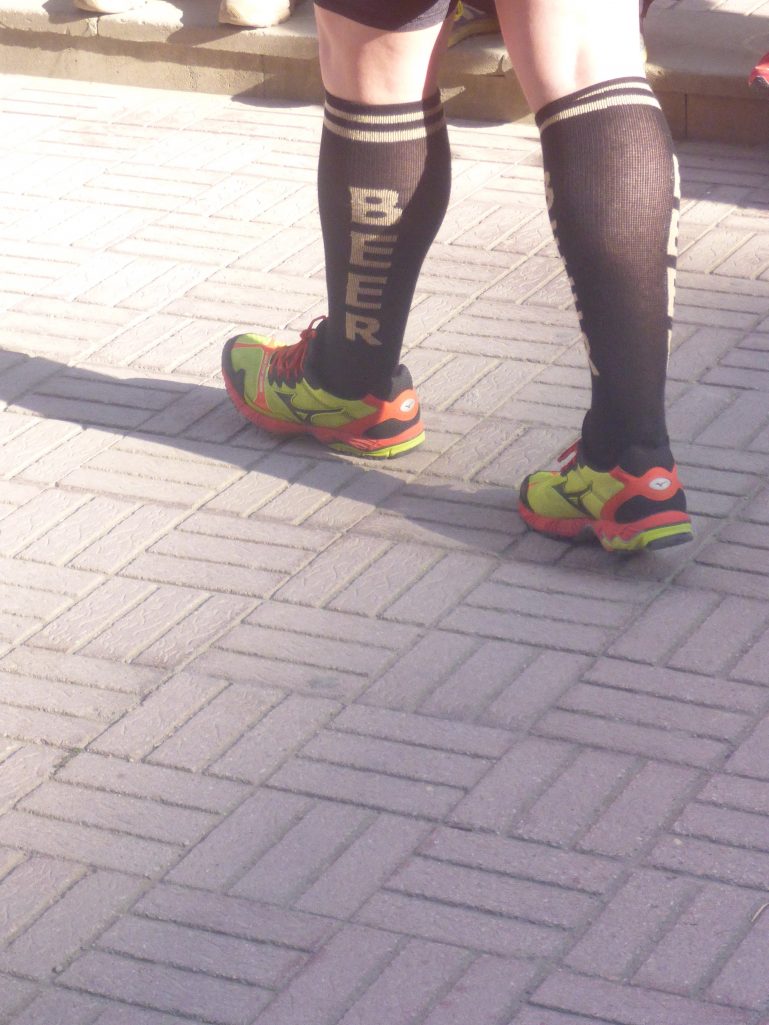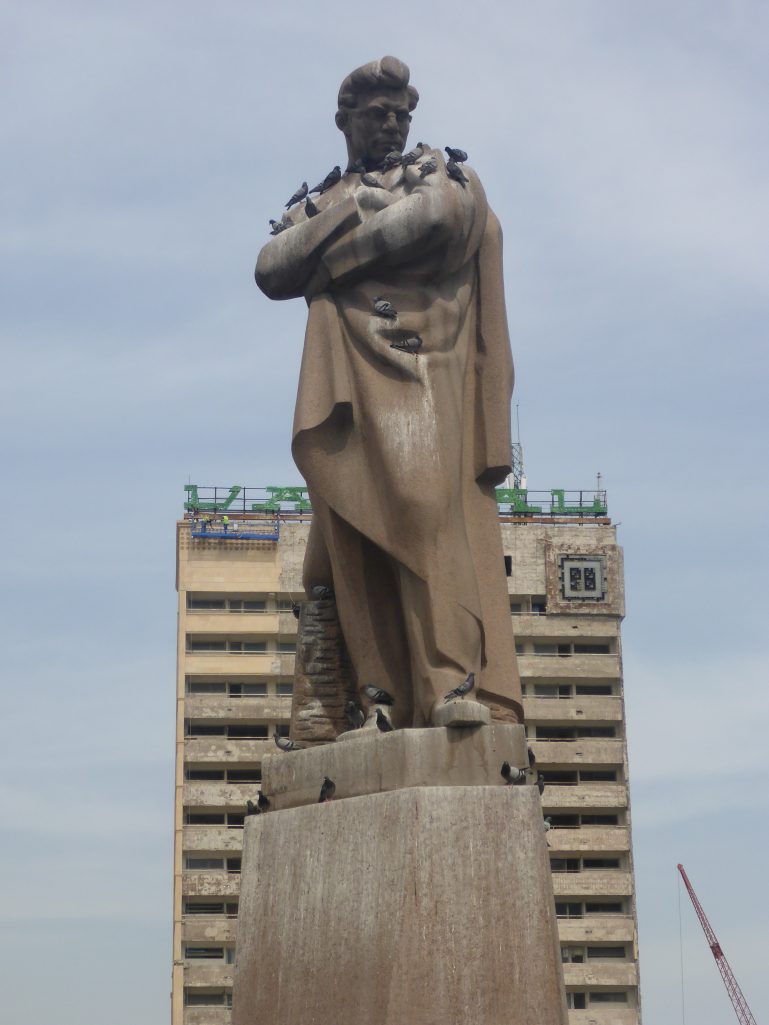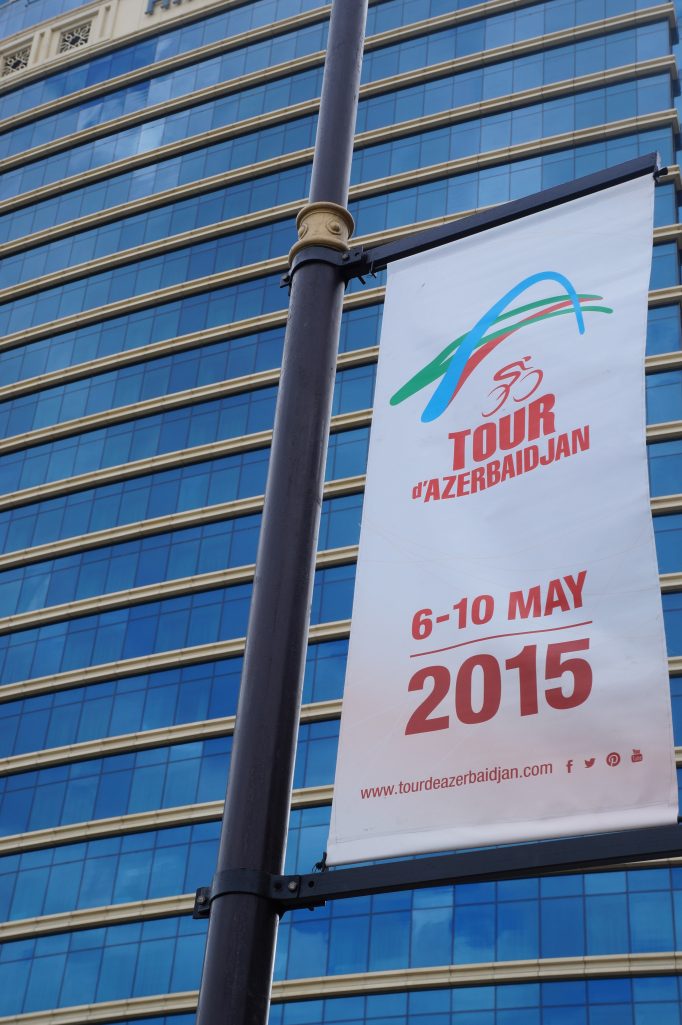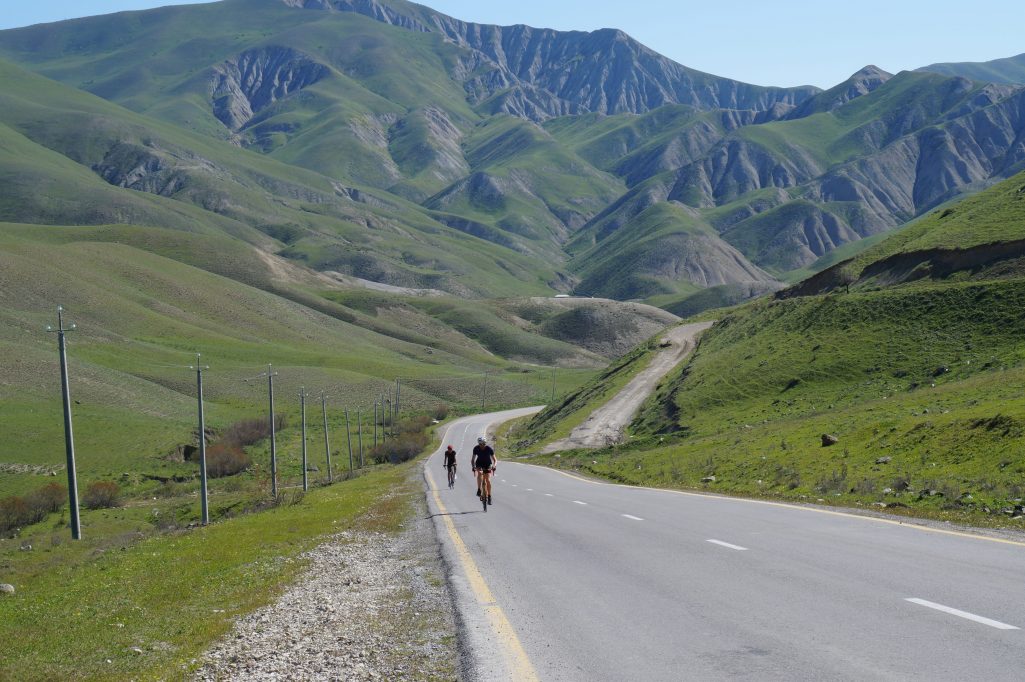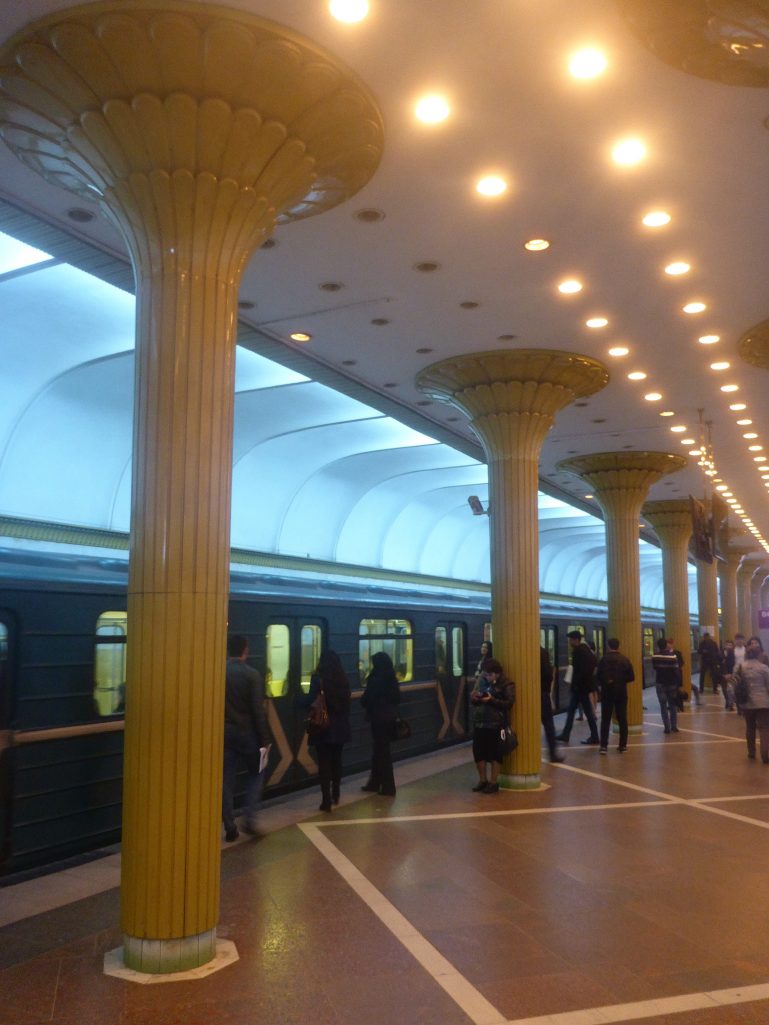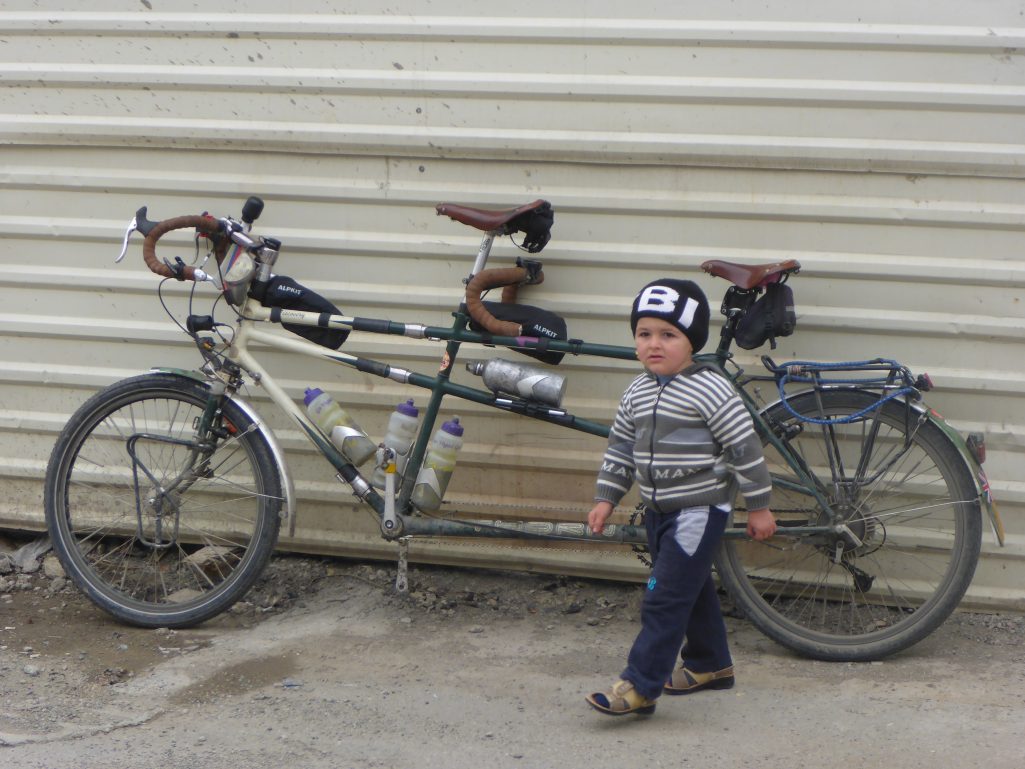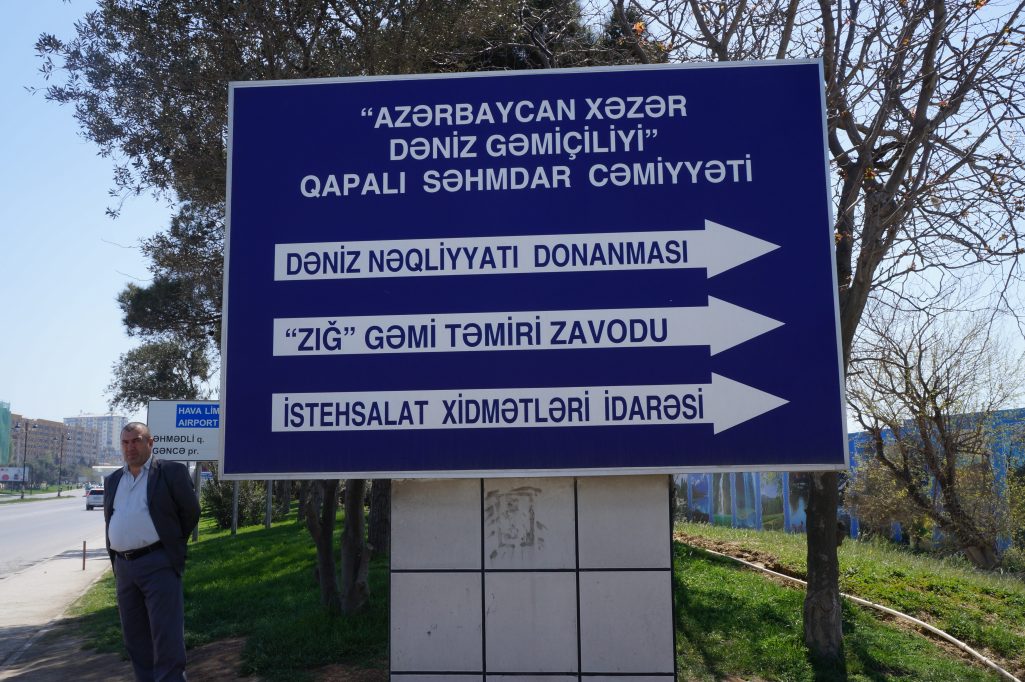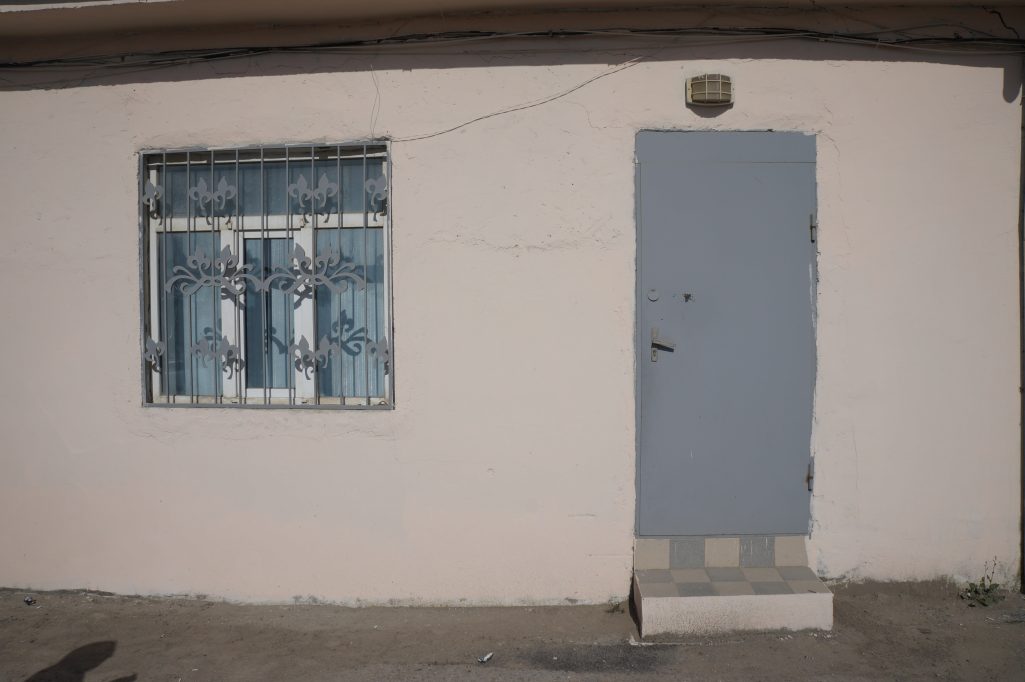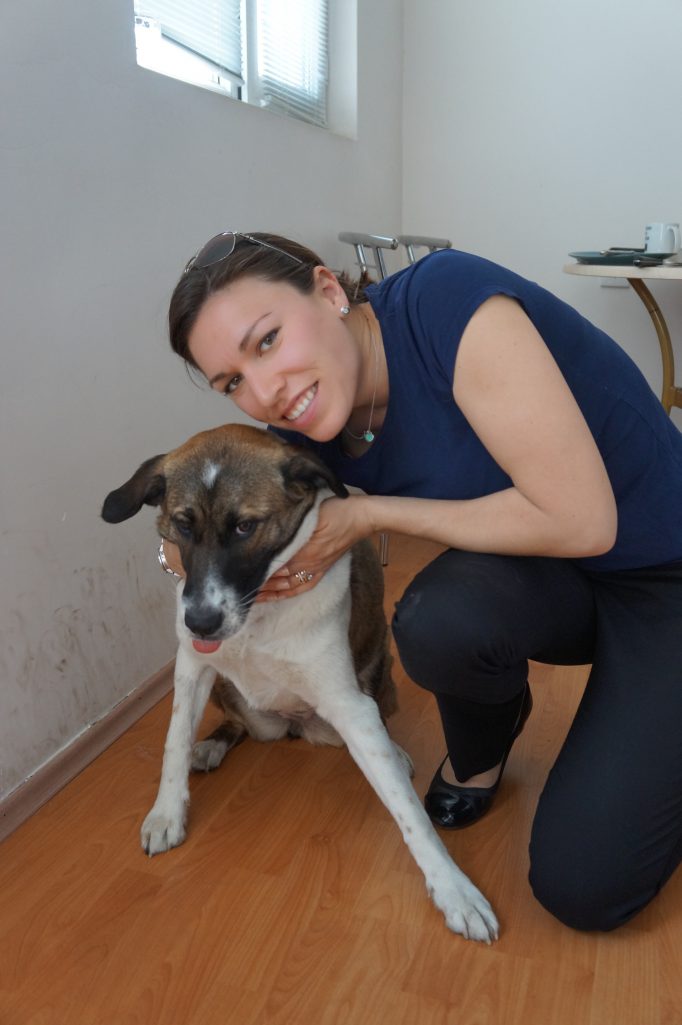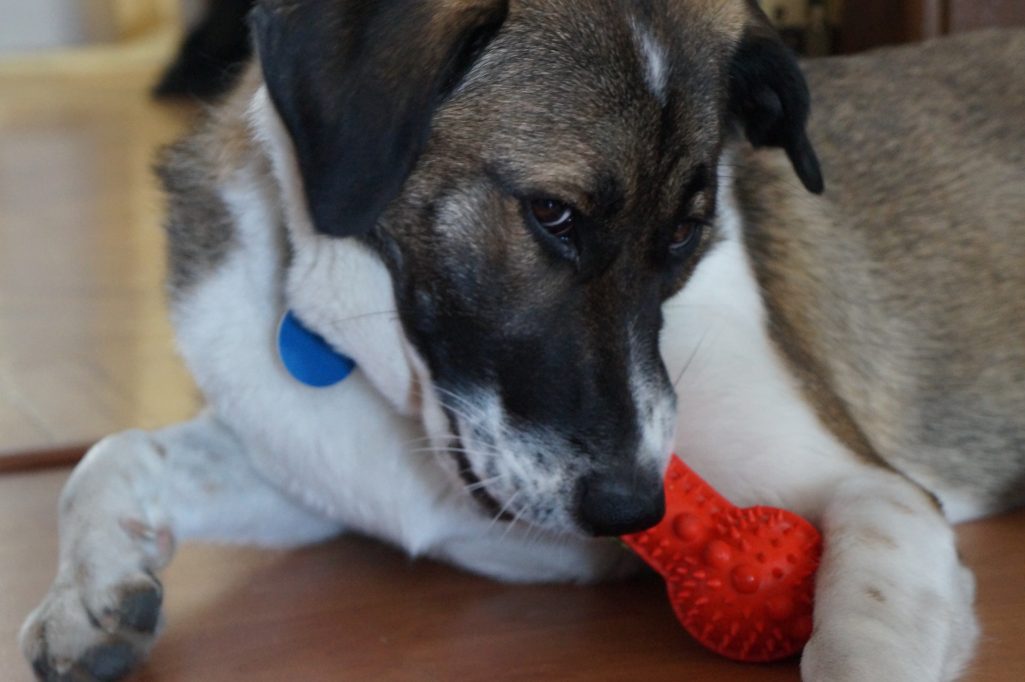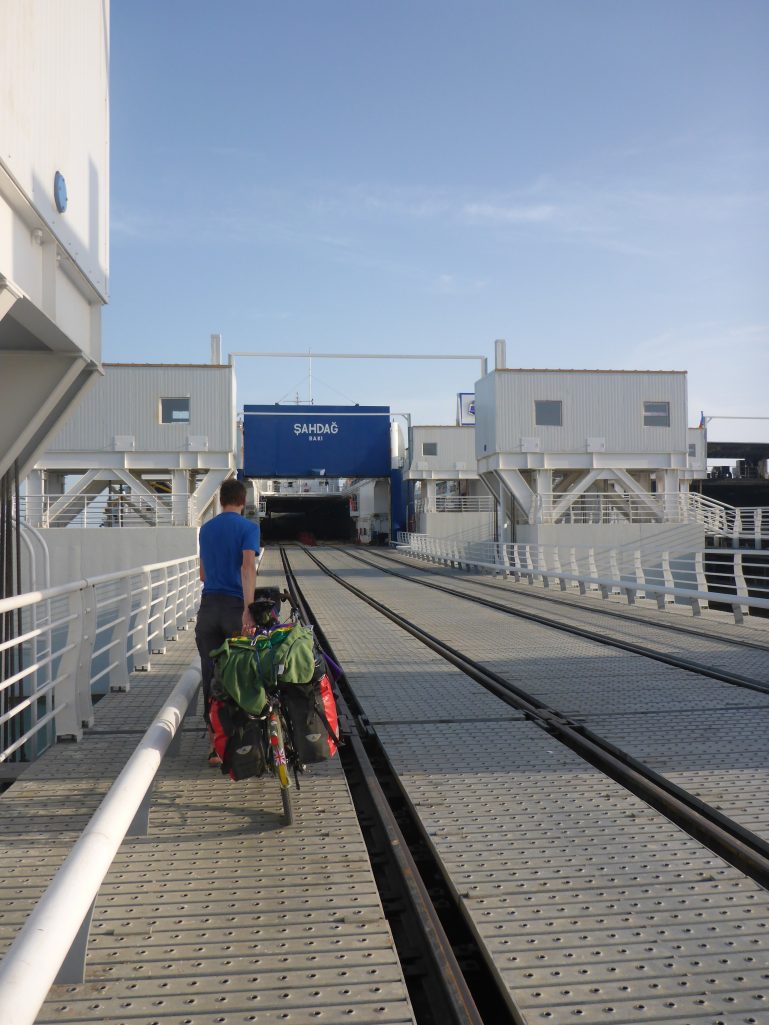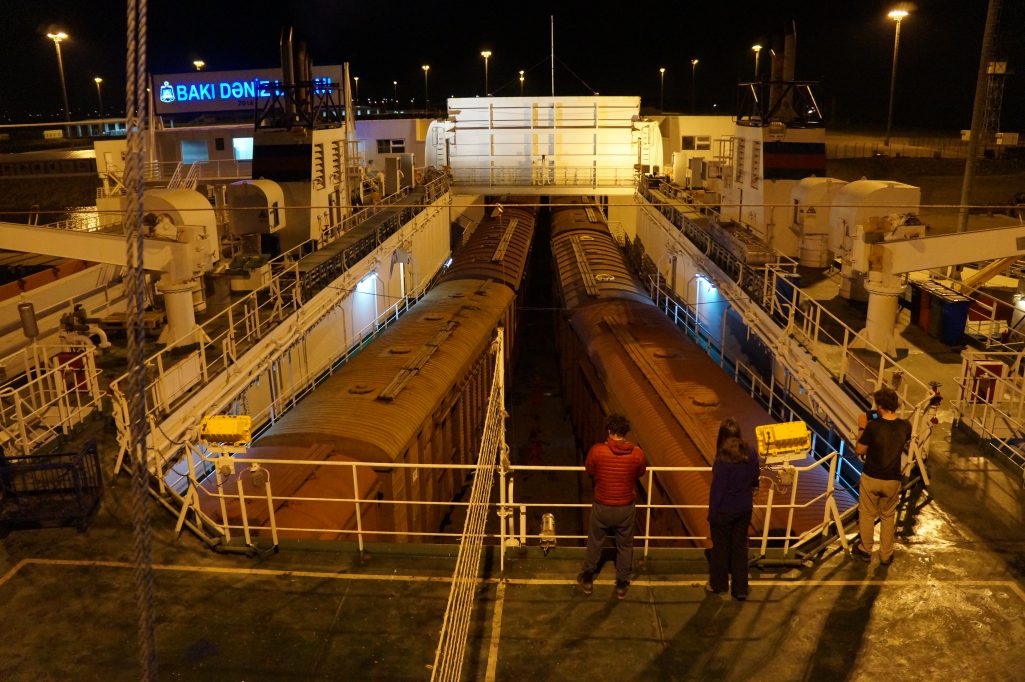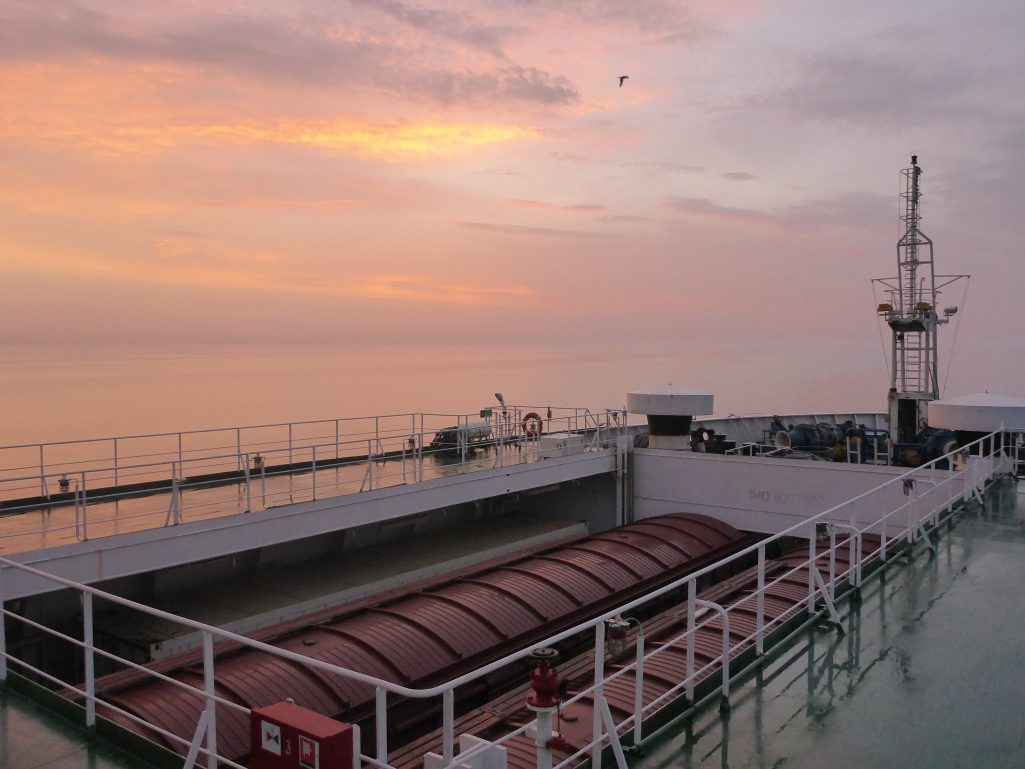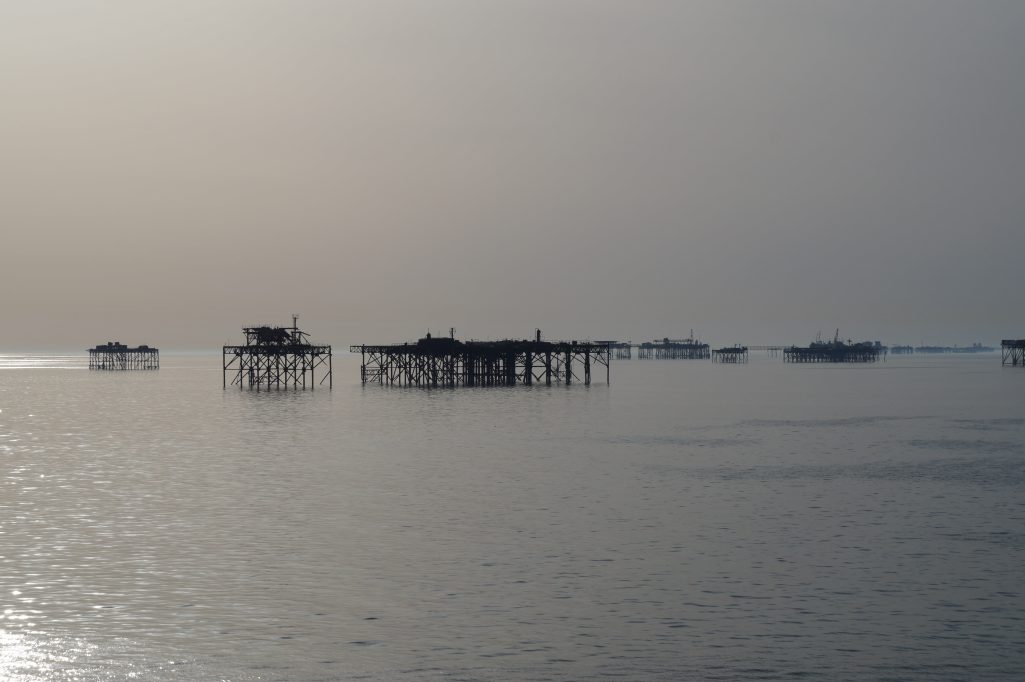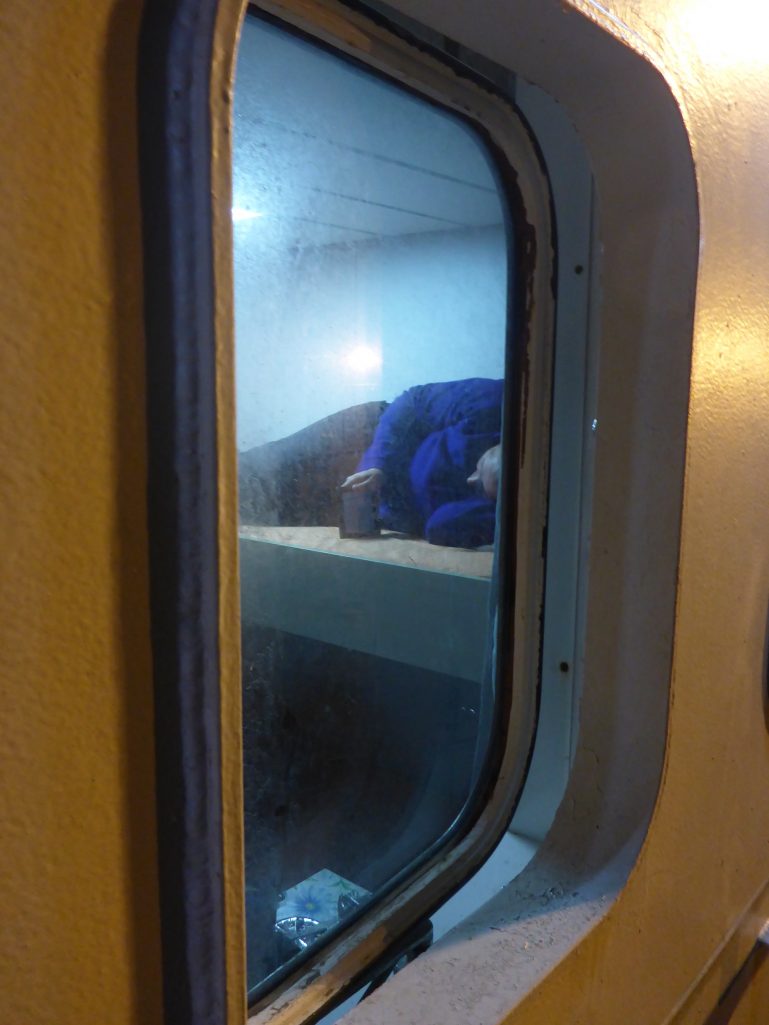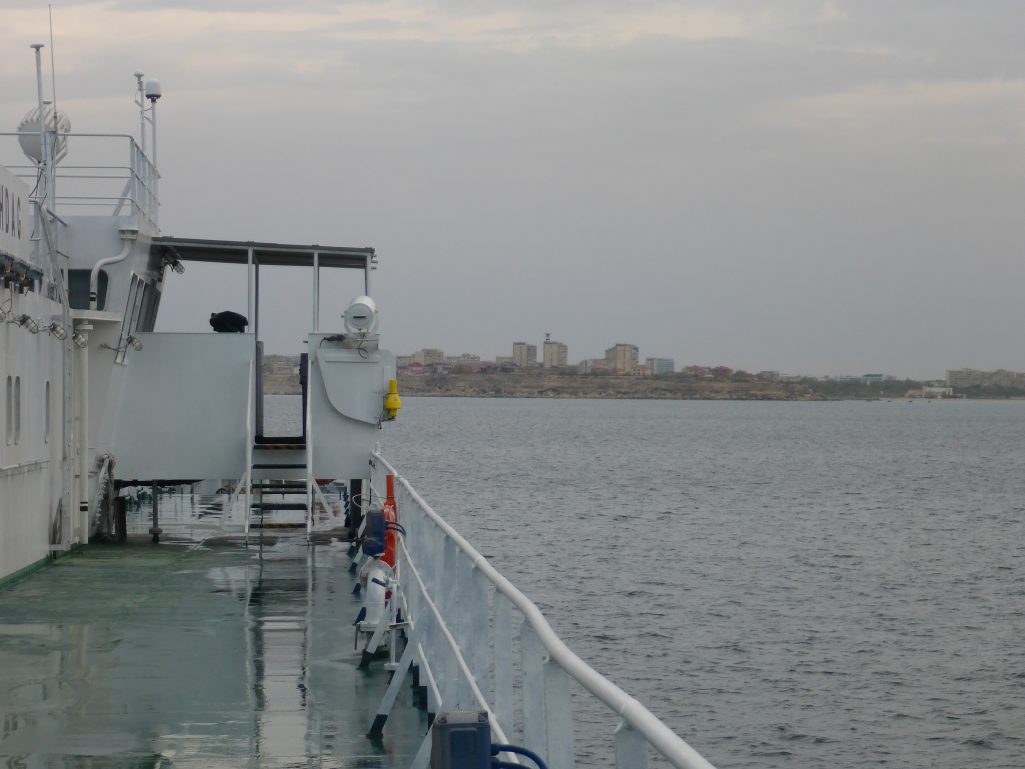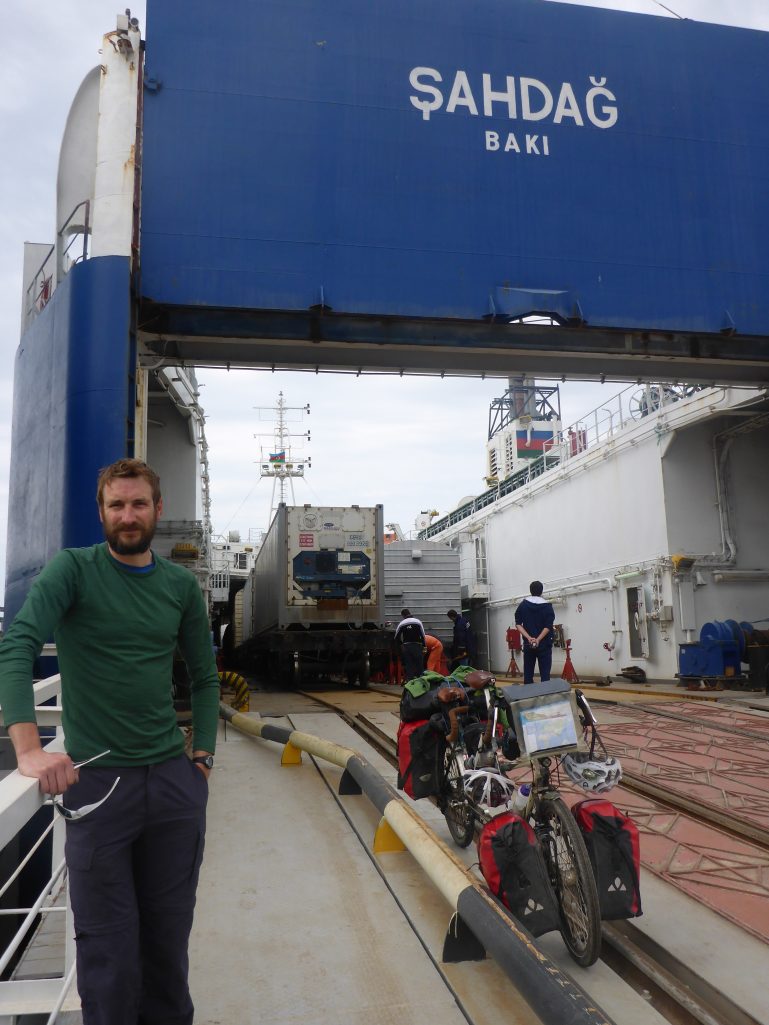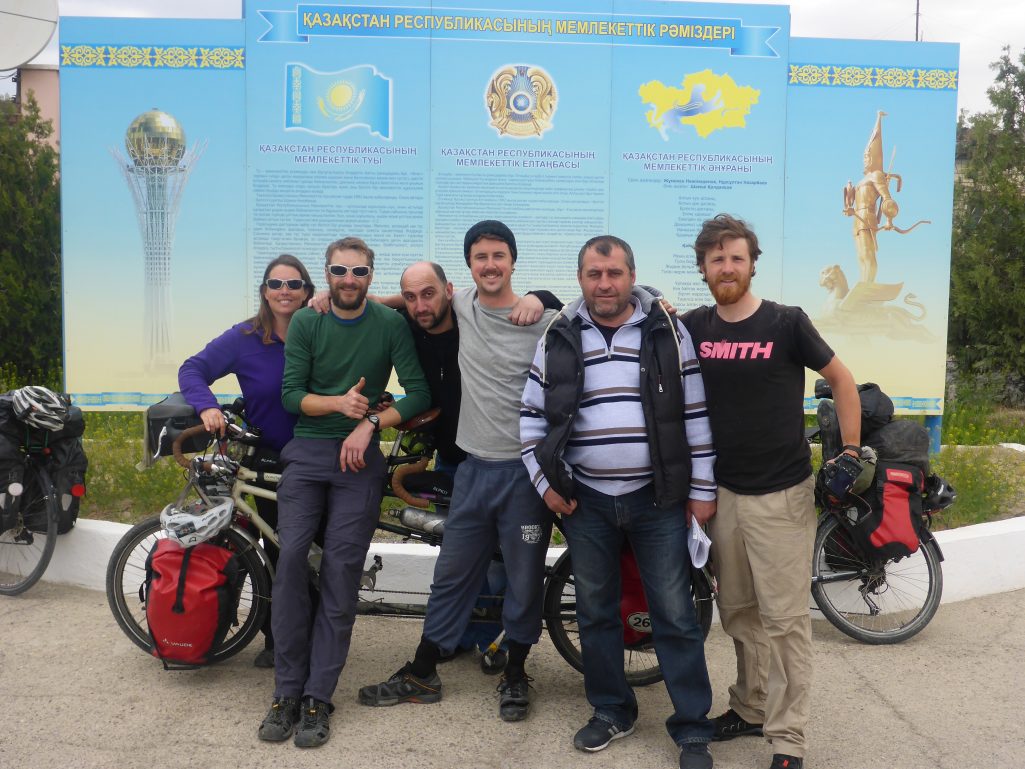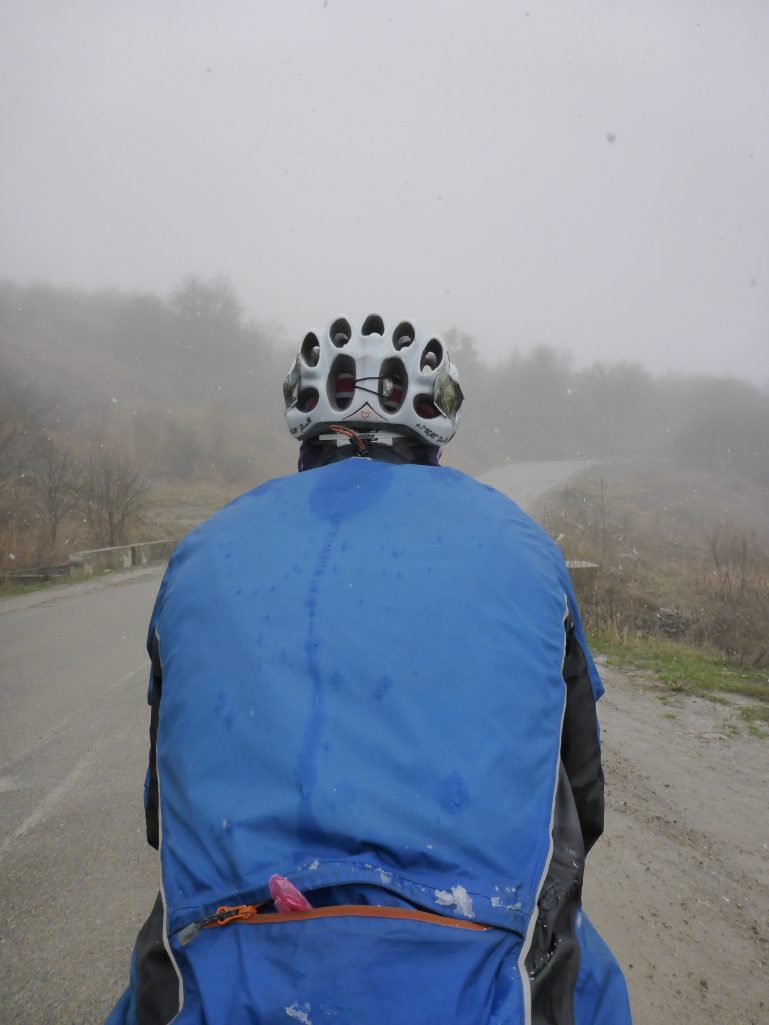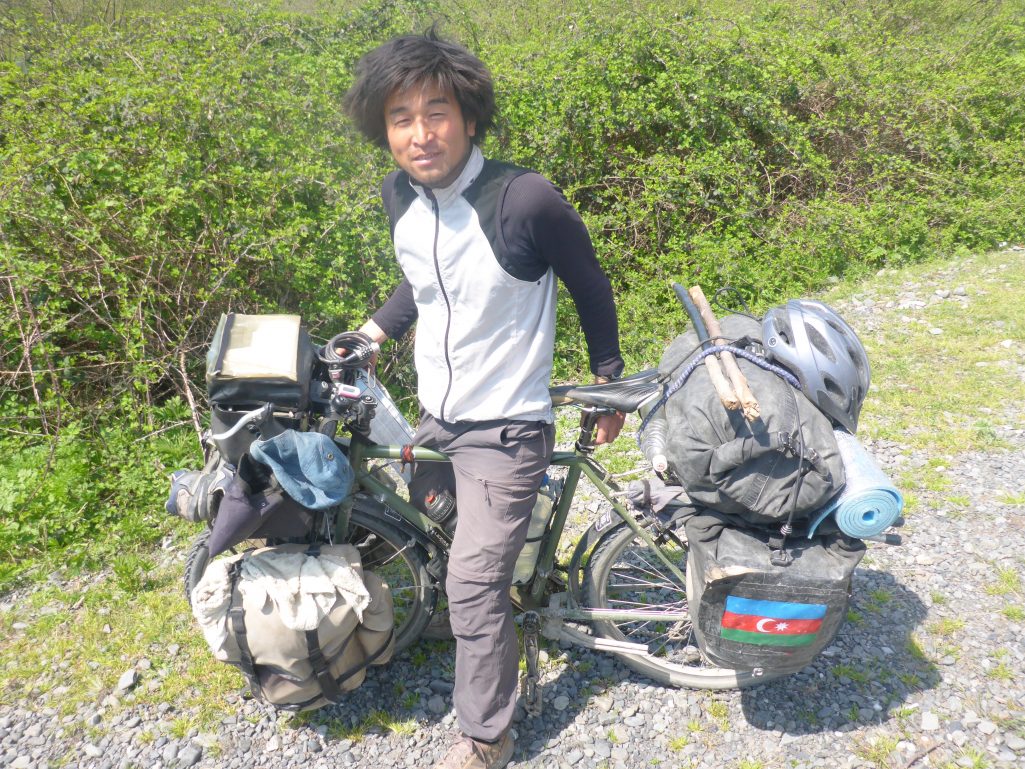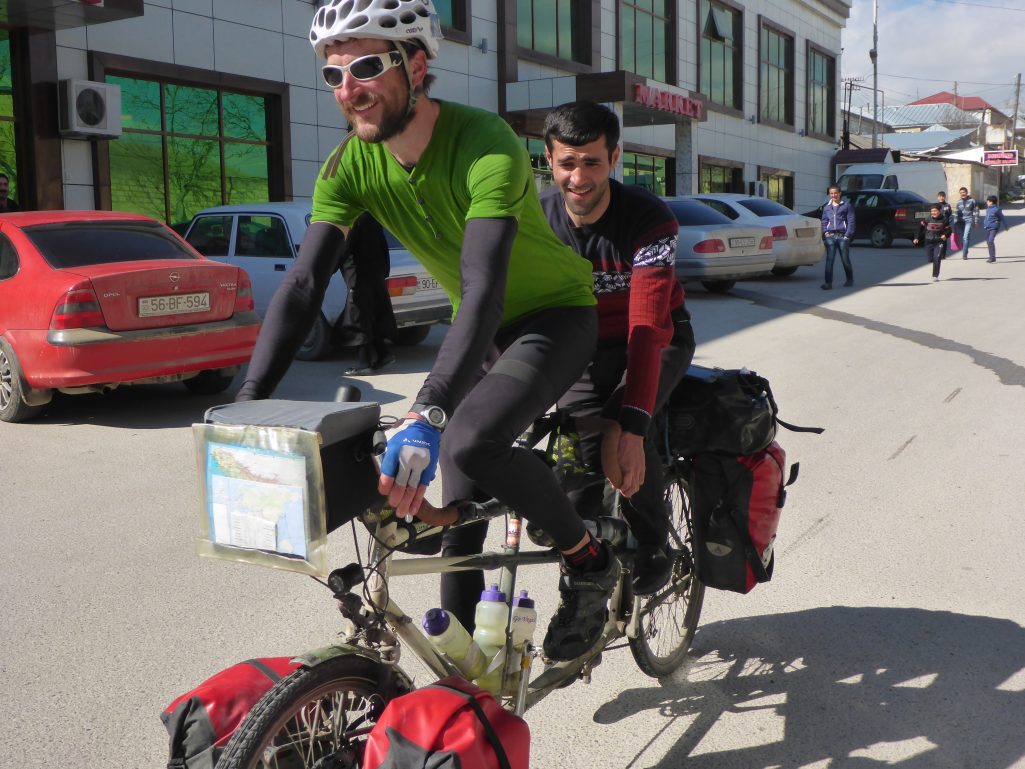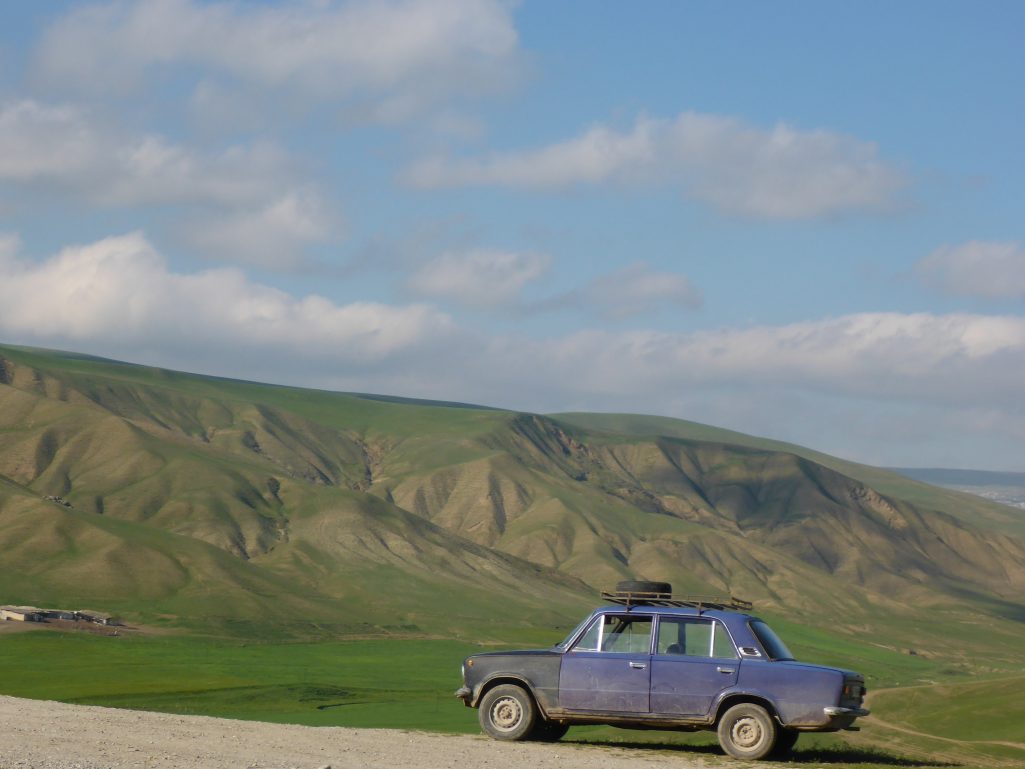Aktau to Nukus

To our left the view is 90% sky with the ground so flat you could set a spirit level on it. There’s nothing but sand and small shrubs stretching out to the horizon. Looking to the right it’s a mirror image. Up ahead the tarmac is arrow straight but there’s supposed to be a slight bend to look forward to in 260km time. Another day in the Kyzyl Kum desert.

Kazakhstan is the 9th largest country in the world but also one of the most sparsely populated. There are 18 million inhabitants spread over 2.7 million square kilometres. Or to put that into context, it’s roughly the equivalent of the population of Beijing spread over an area larger than western Europe. This means there’s space. Lots and lots of space. We’ve heard of cyclists riding to a state of near madness trying to cross the entire Kazach Steppe so we’re glad to have just 550km to cover, it would be very different to anything we’d ridden so far.
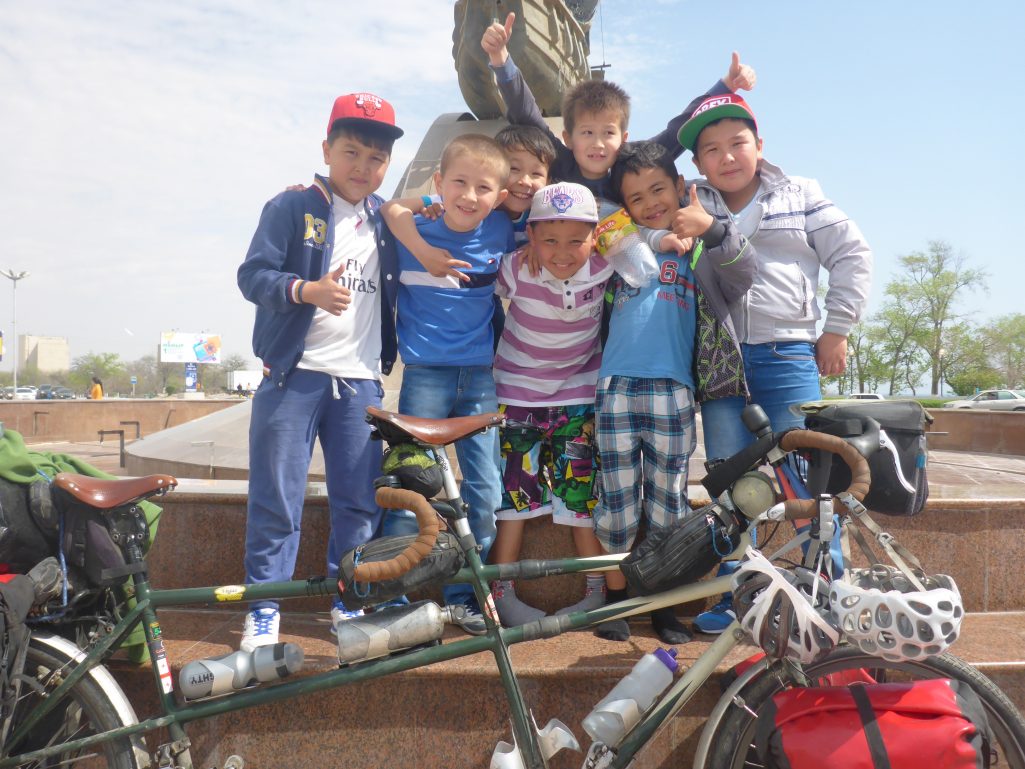

The first 2 days have some variety as there are physical features to ride up and over. We pass at least one town or village each day and the sight of nodding donkeys and swaying camels are initially something exotic to look at.



On our 2nd night we camp on a ridge overlooking the vast expanse of Steppe opening out as far as our eyes can focus. It reminds me of the first time I saw the Grand Canyon. It was a view I fully expected to be underwhelmed by but in reality the sheer scale of the place is hard to take in. It looks like a huge painting and it’s truly magnificent. A train that must be 500m long crawls across the plain and looks no more significant than a line of ants on a garden path.




As we continue, a short, stiff climb takes us up onto a new plateau which is where we say goodbye to the contours.
We’ve actually arrived at one of the best times of year to be here. In the winter it can be as cold as -30°C and in the height of summer its normal to be in the mid 40s. For most of our ride the temperature stays at 25° to 30° which is quite pleasant, we even get a bit of light rain one night. We still end each day with increasingly impressive tan lines and with a salty tide mark on our clothes like a sweaty turin shroud.

The number of towns along the 550km stretch can be counted on one hand so keeping a good stock of food and water becomes even more important than usual. Lidl haven’t expanded their empire out to here quite yet, but there are chaihanas (tea houses) spaced at 50-100km intervals. These small refuges for travellers on the road provide useful supplies, hot meals and huge pots of milky tea. It’s usually served on a low table while we lounge inelegantly alongside on the kharpura mattresses. They vary in form from a converted shipping container to extensions to people’s houses. There’s usually nothing to advertise their purpose until you walk through the door and see a menu and counter.



We’d been told that the food in central Asia wouldn’t be very exciting but we’ve found a great variety of dishes. There’s Lagman which is a noodle based dish either in soup or fried and usually with fatty mutton stirred in. Mante are fat dumplings, not unlike Georgian Kinkale, filled with spicy mutton. Plov is a good hearty meal being a big pile of rice with mutton on top. For a smaller snack a Samsa is very tasty which is a type of samosa in varying shape and size, stuffed with mutton. This menu is repeated at each Chaihana and it never gets easier picking what to go for.

Kirsty has found some very informative blogs by fellow cyclists who have travelled this route and have detailed exactly where the chaihanas are. This takes a lot of the guess work out of how much water to carry so even for the longest stretches we never actually carry more than 7-8 litres in total.


Some of these blogs are from a few years ago and tell of the struggle of some long stretches with terrible unpaved surfaces. Since then there have been extensive improvement works and for most of the route we have lovely smooth tarmac and feel quite smug about it. But the works are on going and the smiles soon disappear when we have to endure some bumpy bits too although for a maximum of 20-30km at a time. In fact we get to ride everything from mud tracks, compacted gravel, concrete slabs and nice fresh tarmac. At one point too fresh which results in an hour gaining an intimate knowledge of the tread pattern of our tyres while we pick out wet, sticky tar before it sets.



Rain and sand create a gloop that clogs up bikes in barely a few metres. After an overnight shower camping near a cemetery 200m from the road we appear to be stuck. Fortunately the local grave digger arrives on a motorbike and is able to ferry our kit back to the road. This coincides with Josh and Rob catching us up having left Aktau the day after us. They get treated to the unusual spectacle of a motorbike and side car loaded with our panniers charging out of the desert being chased by Kirsty on foot and with me dragging the bike behind them. It looks like a robbery! Once bike, bag and riders are all reunited we thank the grave digger who returns to his duties and form a compact peloton with Rob and Josh into Beyneu, the last town before the next border.



The 90km of road from Beyneu to the Uzbekistan border has good bits and bad bits, but on the most part it’s truly awful. All rules of the road are abandoned with cars, trucks and bikes weaving from one side to the other to try and find the smoothest line. When there are no smooth lines vehicles just drive alongside the road and so the rows of tracks get wider and wider. It takes total concentration to thread the bike through the maze of holes, bumps and ruts with the occasional yelp from Kirsty who holds on like a rodeo rider.




The border crossing goes worrying smoothly. When we arrive the place feels like a refugee camp with queues of cars filled with sleeping passengers, most of them loaded up with an entire household’s worth of furniture. Some people traveling on foot are held in a high fenced pen. After clearing the Kazakh side we get directed down a barbed wire lined alley at the end of which an Uzbek guard nods to a room where we can get our passports checked and then we seem to be free to go, so we do. There’s none of the expected thorough bag search and lengthy customs forms to fill out. We can only hope this doesn’t cause a problem when we try and leave.
A certain Joseph Stalin was tasked with implementing the soviet ‘divide and rule’ strategy in Central Asia to create countries where before there were mostly just different ethnic groups. Taking this quite literally he drew a very straight line in the sand at this point with one side being called Kazakhstan and the other Uzbekistan. I suspect no one was going to argue over who had which part of the wide open nothingness.

As such, not much changes in terms of the view and we have the prospect of another 300km of desert to ride. The language has only subtle differences too. ‘Rakhmet’ becomes ‘Rakhmat’ for thank you. Chai becomes Choi and Yok for no becomes a much more satisfying Yuk. Russian is still the 2nd language for most of the older generation so we use the odd ‘Ruskie’ word here and there while anyone under 30 will have learned English which makes things easier.

After a cosy night with some taxi drivers just after the border who offered us chai, then plov then vodka then some floor space to sleep on with an awkward cuddle in the night for me and an unwelcome foot massage for Kirsty, we’re back on the desert road.

Soon we find more work in progress than work complete with rocks, ruts and plenty of mud which makes for slow and hard going on the tandem. Amazingly this is a major transport link with Europe and for days trucks trundle past from Latvia, Belarus, Poland and Turkey no doubt enjoying the unsurfaced road as much as we are.


For the worst sections we’re actually quicker than the trucks and we get a friendly toot of the horn as we bounce past. Thankfully the road improves and we cover the next 300km in 2 and a half days with the wind blowing a different direction each day. We just get some music playing and get through a few games of eye spy. Something beginning with S? Sand? Yes.


After 1 particularily hard 130km day ,The Bon Voyage cafe offers us a sofa to sleep on to save getting the tent up. We wake at 5am to find 20 or so lorry drivers have crept in and are sleeping all around us on every available surface.

Then we reach a river and like a switch the view turns green. Fields, houses, mud huts, trees, animals, people, cars, bikes, buses, donkeys. We’re in Kunqorot and have found civilisation again. We’re also in the autonomous region of Karalpaqstan (a minor ‘Stan to add to the list) and a couple of days later arrive in its capital, Nukus.



Ranking highly in the list of environmental disasters caused by the soviet union, not far behind Chernobyl, is the Aral Sea. In 1960 the three main rivers that fed one of the largest lakes in the world were dammed so that the water could be used for agricultural purposes. Ever since the sea has been shrinking at an alarming rate and it’s now 1/10th the size, leaving behind a salty desert and a devastated fishing community. We decided to arrange a trip to the sea side, while it’s still there.


After booking a driver for the next day we go in search of a camp site. Pamela finds us eyeing up a field and puts on a fine bull mime to indicate that it’s not a good place for us to stay. Instead she leads us back along a dirt track to her village, all the way proudly telling her neighbours that we’re “Tourists, Anglia!”. Soon a crowd has formed and we all gather for photos and her nephew Amil translates the many questions as he’s studying English at college.
Inside the house is sparse with little more than a few patterned rugs on the floor and a low table in the main room that we all sit round for dinner. The only other item in the room is a 40″ flat screen TV. We drink tea, eat soup, bread, jam, vegetable paste then Amir asks if we’d like to meet the rest of his family. It’s hard to say no so we go on a walk to his mum’s house then across to the next village where his grandparents and sister’s family live. Here we have to politely nibble a complete second meal. There is a wonderful custom of holding your hands out at the end of the meal while a prayer is said and then everyone brings their hands down over their faces as if stroking a beard. In my case I actually do stroke my beard. It’s something we see being carried out numerous times as we ride through the country.
Eventually we’re returned to Pamela’s house, much to her relief as she was worried her guests had been poached. We settle down under the stars on the tea bench outside and wake to the sound of the cows being milked alongside us.

We say our goodbyes and thanks with hands on hearts as a sign of sincerity. The first impressions set by the Uzbek consul in Baku were unfounded as we’ve found nothing but generosity and kindness here and leave with some unique memories.

When we booked the Aral Sea trip we knew it would involve several hundred kilometres of very rough roads across the former sea bed and up onto the old coast line. We expected a 4×4 vehicle fully equipped for the ardours of the journey with sand ladders, snorkel kit and raised suspension. What we got was a Daewoo saloon with a spade in the back.
We also got Aylim who more than made up for his lack of equipment by brining his heaviest right foot and a complete lack of fear. What followed were two very exciting yet very terrifying days with Aylim displaying a level of courage never before seen outside the world rally circuit. He had a total disregard for maintaining the integrity of the car and little interest in the lives of its occupants. If things looked tricky, as they invariably did, he’d use good old fashioned momentum to get us through it.

We pay a sobering visit to Moynaq, formerly a prosperous fishing port and beach resort. Now the sea is over 200km away so the fishing boats lie rusting in the desert and the canning factory is long since closed. Somehow there is still a community living there but it’s reducing in size every year so could one day be a ghost town.





While hurtling down across the sea bed we find that inevitably there are a queue of people waiting to profit from the disaster. Numerous drilling rigs have been sunk to tap into the newly revealed gas fields which is much easier without the inconvenience of several metres of water in the way.

Without a proper road we’re in real wilderness and it’s a relief when we reach the high cliffs on the other side that used to form the coast line. Up on the cliff top we follow some twisty tracks for a couple of hours more then the Aral Sea finally comes into view. We drop down a very steep gulley and run in for a dip.



As well as being 10% of it’s former size it’s also 10 times as saline so nothing lives in the water and swimmers float like a cork.

We spend the night half way up the cliffs and while watching the night sky come alive Aylim puts on one of his favourite CDs. Hits from the 90s. It’s an unusal experience sipping vodka with nobody near us for 100km in any direction while listening to Snap, Vanilla Ice and Scatman John.



The trusty Daewoo gets us back to Nukus the next day, via a garage to get the exhaust welded back to together. When we pull to a halt back at the bike we expect the car to disintegrate in a reenactment of the final scene in the Blue Brothers.



But this is made of stronger stuff, in fact it’s made right here in Uzbekistan. General Motors have a huge manufacturing plant in Asaka that the government have a 75% share of. To help support the local industry they have levied a 200% tax on imported vehicles which makes them prohibitively expensive for most people. As such there are just 5 different models of car on the road which either wear a Chevrolet or Daewoo badge. The most popular is a nippy little micro van that comes in any colour as long as it’s white and can fit at least a dozen people inside, with a few sheep. Of course the prices are fixed so the cars cost more than in any of the surrounding countries that they are exported to and are released in limited numbers to increase demand. Another good idea borrowed from the Soviet Union.
We’re glad to get back to the relative safety of the bike. The route now takes us towards some of the famous historical cities of the Silk Route, following in the footsteps of Marco Polo and Ghengis Khan. We’re not quite finished with the desert though and have a few more days of monotonous views to look forward to before we escape to the mountains. I spy with my little eye something beginning with S. Sun? Yes.





